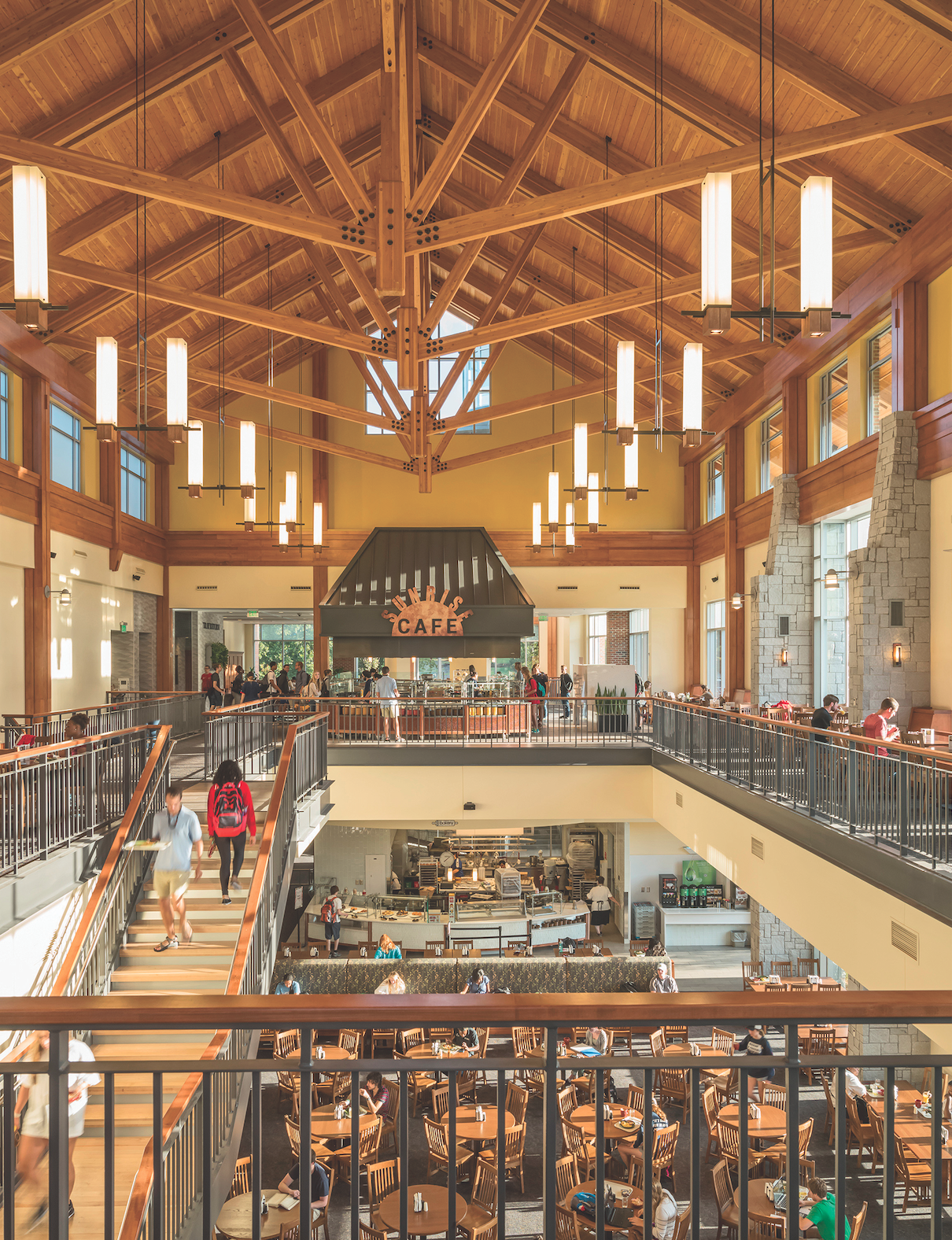
The objectives of sustainable design are broader than just environmental effects, having come to embrace issues of human health and performance. As sedentary and service-related work becomes more prevalent in our society, the amount of time people spend inside buildings increases—the average North American spends 90 percent of his or her time indoors, another five percent in cars and only five percent outside. This course highlights buildings where the use of wood as a structural or finish material has impacted indoor air quality, acoustics, and well-being. It also covers research supporting the growing trend of biophilic design.
By the end of the course, you should be able to do the following:
- Define the relationship between a building’s sustainability and the health and performance of the building’s occupants.
- Explore how wood was used to enhance the experience of building occupants in projects from around the country.
- Recognize how wood used as a structural and finish material contributes to key elements of occupant environment including indoor air quality acoustic performance and physical health.
- Examine evidence confirming the positive human response to wood for its aesthetic qualities and connection to nature.
Course Type: Article
Featured Course: No
Learning Hours: 1
AIA Course #: TWREN6239
AIA Credit (LU/HSW): 1
AIA Session #: 1
AIA Expiration Date: June 21, 2026
Provider: Think Wood
Credits: AIA LU/HSW
